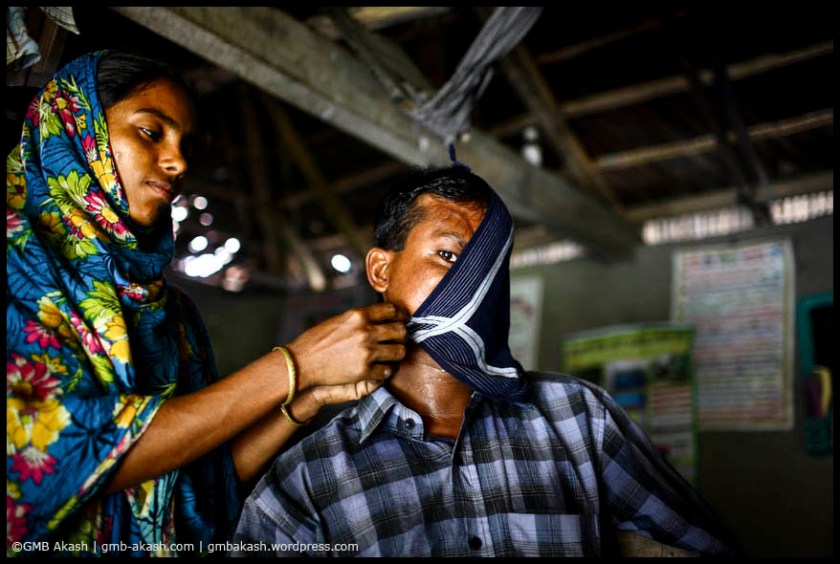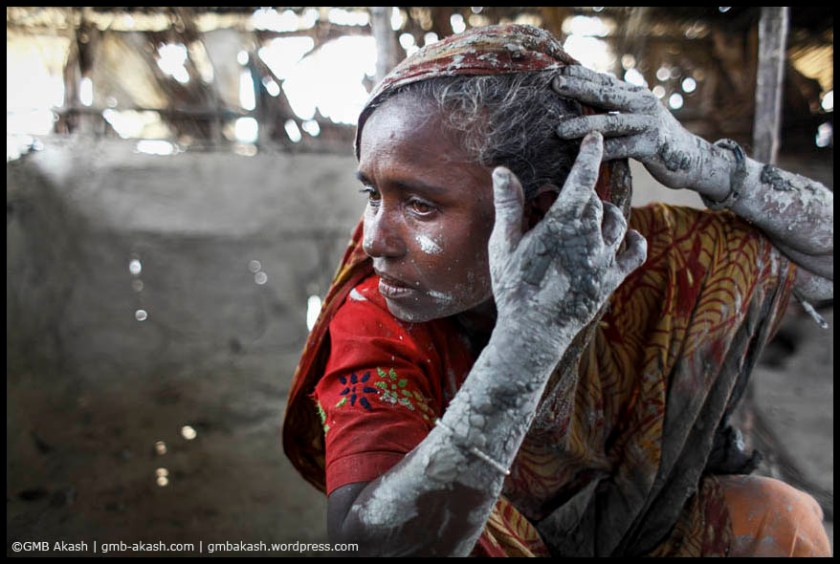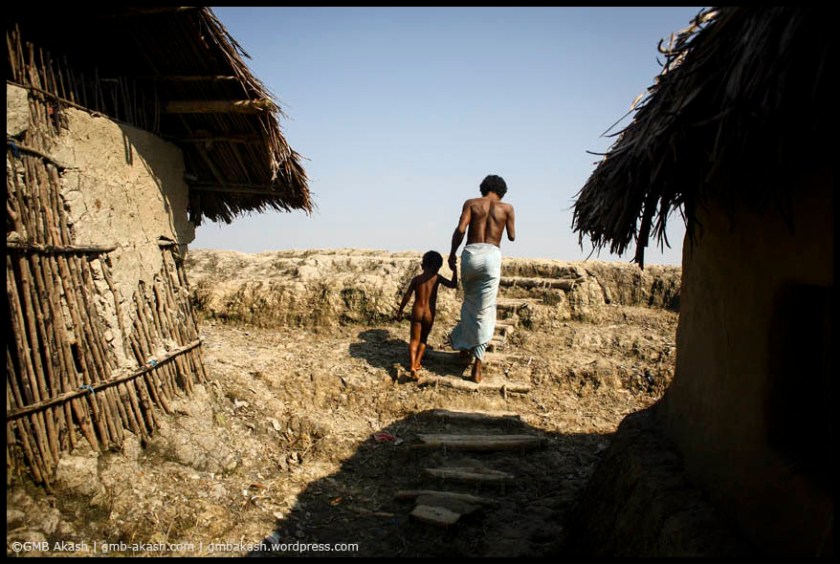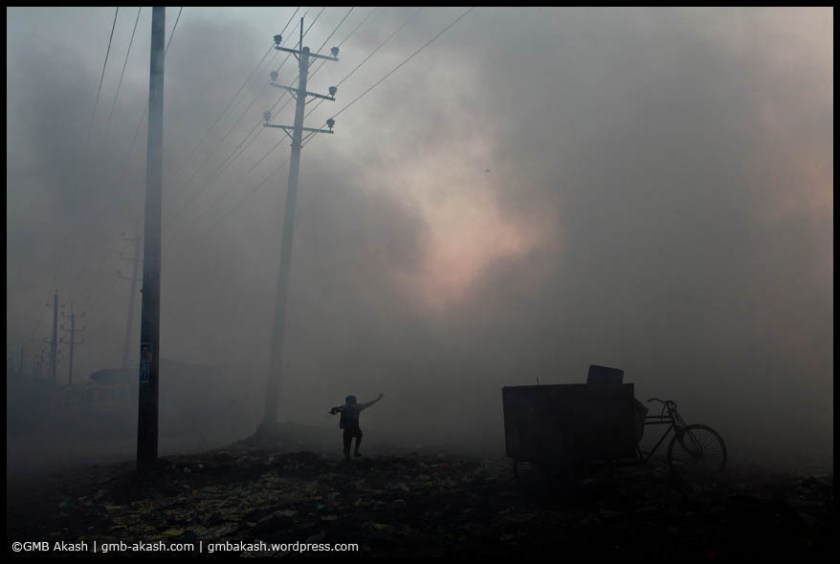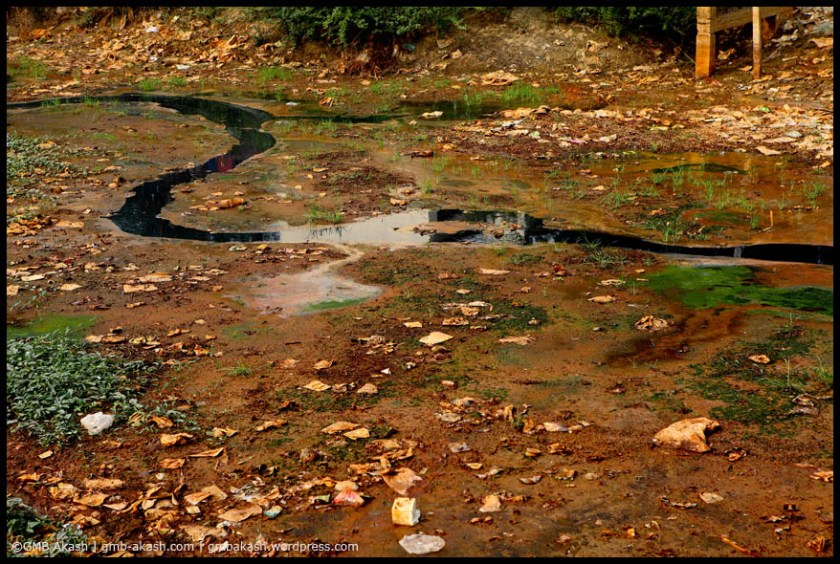“Every day living in the terror of death is enough to sabotage ones life. Behind the beautiful jungle there are stories which has mentally paralyzed 3,000 ‘tiger widows lives’ in the universe of Sundarbans. People living surrounded by the jungle are living in the fence of fear. Fear of losing their own life or their family in any day or night. Sons after losing their parents, grandparents in tiger attack has again walked in the same path to feed rest of the family, knowing their life may end any day, any moment by a second’s ignorance. Their bravery of fighting with a small knife with the ferocious tiger is heroic only if they can fight and win, if not the flesh of the hero will dry and might disappear in salty water of the sea. From there no one can get anything than the blooded cloths. The story of surviving hunts them every moment in their life. As the beautiful jungle is the reason of their life and reason of their death too. They and their breathe belong to the mighty inescapable jungle” – GMB Akash
Marium Begum’s Husband Abdul Hamid went for fishing in Hatdabra canal in the Sundarban along with two fellow fishermen after Azaan. While they were fishing a tiger swooped on him and dragged him into the deep forest while his fellow fishermen escaped unhurt. Later, forest guards recovered the bruised body from the deep forest. Marium is just one of about 3,000 “tiger widows” in the Sundarbans.
Marium is bearing the wound of losing her husband. She describe the day with a painful tune , “The day remains nightmare for me. Noisy birds were circling my hut. There were bad omens everywhere. And my heart was beating in rush. I told him not to go but there was no food to eat so he has to leave and never come again” – Marium
75 year old Momresh Sekh lost his left eye to an attack by a tiger in 1969. He was accompanied by his uncle who hit the tiger with the branch of a tree. A jagged scar runs from his head to the back of his skull. Lumps of flesh were torn from his chest and thigh. He is blind in his left eye.
Forty-five-year-old Emem Ali poses with his daughter. In 2008, Emem was the target of a tiger attack. Grabbed by the arm, he was dragged into the forest, but abandoned by the predator at last. Found and brought to safety by a companion, he lives to tell the tale. Now he is living by selling fish in the local market. He is hoping to get a shop for surviving.
It was a small life saving knife as this only tool saved Shofiqul Islam’s (42) life from the men eater tiger which was snatching him to the jungle. Hurts kept marks in his body though honey collector Shofiqul lived form hand to mouth for four months by avoiding the path of jungle. But after four months of his attack while again he was entering into the jungle, he said ‘Either I have to earn my food or I will become food for the prey.’
This shirt bears the horrific memory but it is an icon for Shofiqul (42) too. The shirt reminds him the roars of the attacking tiger, its unbearable snatch to his backbone and his spirit to fight back to it with nothing but a small knife.
Shofiqul said “You no longer have to go deep into the forest to be attacked. They wait at the banks. I have never seen that before. We believe that even to use the word tiger risks summoning one”
The Sundarbans is made up of hundreds of islands of mangrove forests and mudflats. This is one of the most beautiful but most dangerous places in the world, a place of tigers and crocodiles and dangerous seas and canals. The region is home to approximately 500 Bengal tigers, one of the largest single populations of tigers in one area. These tigers are well-known for the substantial number of people they kill; estimates range from 50-250 people per year. Because of rising sea levels and shrinking forest, humans and tigers are fighting for space. The farmers are forced into the forest to hunt for honey, fish, or collect crabs, putting them at risk for a tiger attack. Poverty forces people into the forest, into the tigers’ natural habitat. And the animals are hungry, with hunting and newly introduced diseases steadily reducing the populations of wild boars, deer and monkeys in the Sundarbans. Hindus and Muslims alike believe that only the Goddess Bon Bibi can offer protection from the big cats. There are several statues of the forest goddess scattered throughout the jungle.
45 year old Shaidul has stitches put into his chin in Shemnagar Hospital. He was badly injured by a tiger while he was out fishing. He said , “I thought it was a large dog. I pushed it away and heard a splash within the time its hits me”
45 year old Abu Taleb lies motionless outside his home. He was attacked by a tiger whilst fishing and has now lost the use of his arm and leg. He is unable to walk without the help of his wife. He spent seven days on the floor of Satkhira Hospital with severe injuries to his head, back and neck. After a year of bed rest he has still not recovered from his injuries and his wife has been forced to become a day labourer and beg house to house.
In 1995, the attack was on his first day out fishing. He was sleeping in the boat when the tiger attacked. Though he survived it, the damage to his face was such that no one from his village would come near him. His parents forced a girl to marry him. At the initial days of his marital life, he would not allow his wife to look at him.
Beside men tiger attacked many women of the village too. Faizun is showing her scars which are permanent mark in her head. Tigers are coming closer to villages in search of food. They smartly attacking villagers and standing near the bank. Faizun was collecting woods from near her home beside the bank of the river, while tiger attack she thought it is a big dog while realizing she remember nothing. She believes forest’s goddess saved her. Somehow she manages to escape and after the attack, she fled to her hut and collapsed.
42 year old Atiar Rahman was attacked by a tiger whilst out fishing. He lost his sight in his right eye, the ability to hear, as well as severe injuries to his back, neck and face. He spent six months in hospital at the cost of 9,000 Taka (80 GBP) and is now completely bed-ridden. His wife works to support their large family by working as a day labourer. She earns 50 Taka (0.4 GBP) a day.
Because of rising sea levels and shrinking forest, humans and tigers are fighting for space. The farmers are forced into the forest to hunt for honey, fish, or collect crabs, putting them at risk for a tiger attack.
The boat is the small vehicle which is use to go for fishing in the deep forest of sundarban. And often while they stay at the boat in night tiger attack fisherman and they have to fight back.
“Inside the Sundarban there is ‘silence’ everywhere, a fear runs in veins with the fragrance of incense, standing in the village of frequently visited by Man Eater Tigers, listening villagers rhythmic chanting and prayers and feeling the urge to get back to safety all these made it helpless for urban, educated, technologically advanced people. This jungle is only understandable for the people who are made from it, the people live by jungle can’t leave the place even knowing how risky to live within. Thus they will face the hungry tiger habitually either to live or to die.”
– GMB Akash











